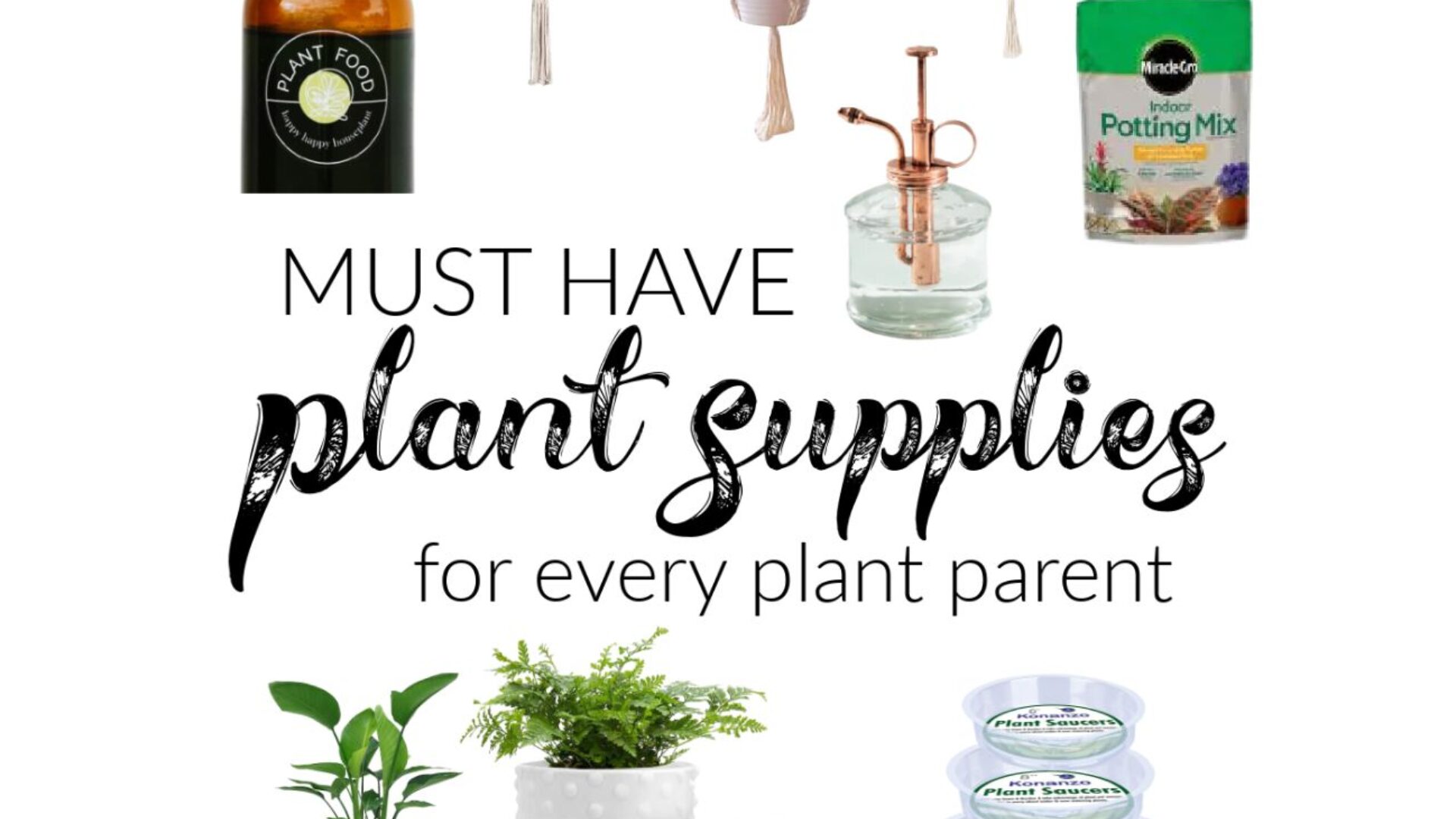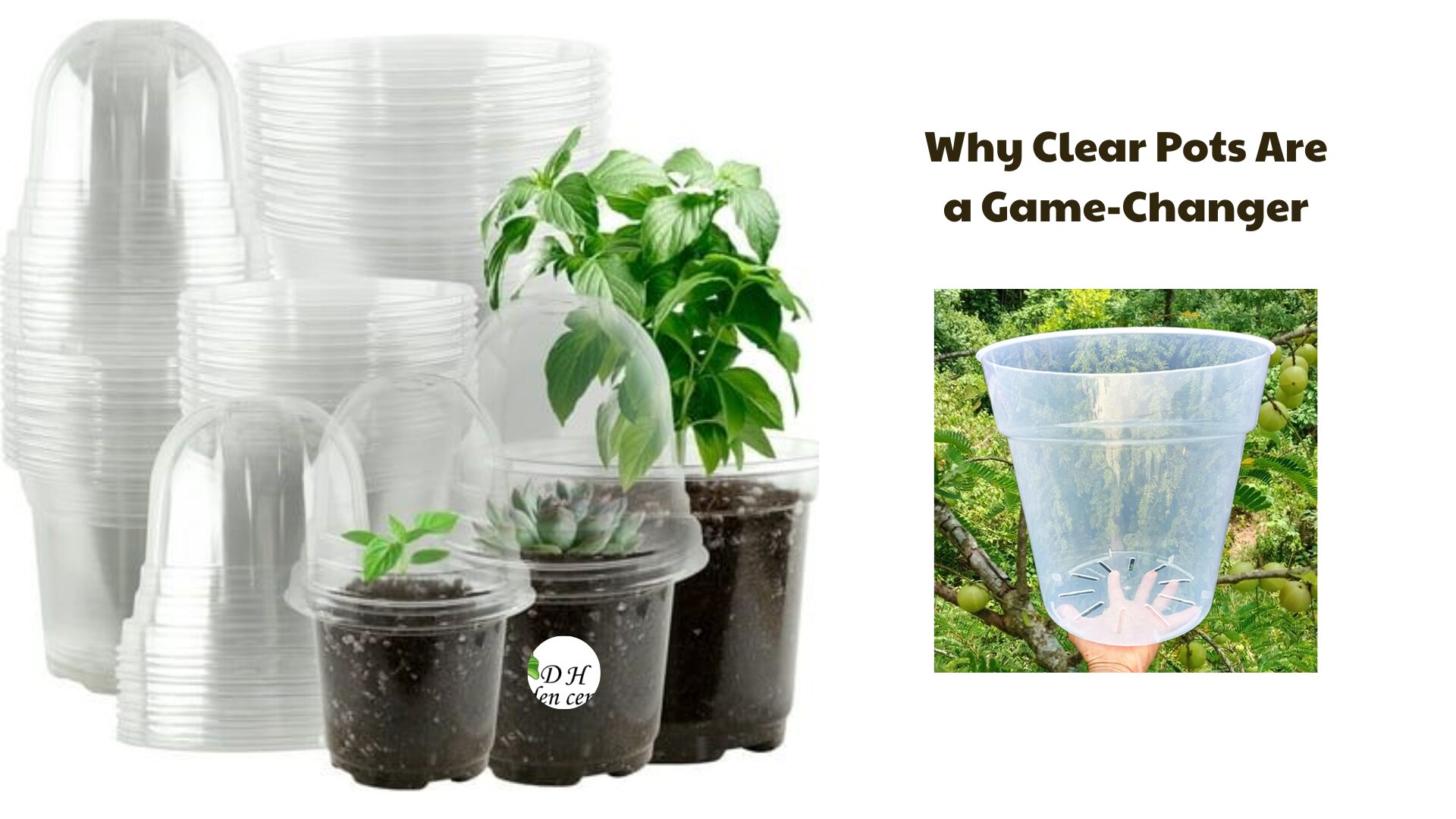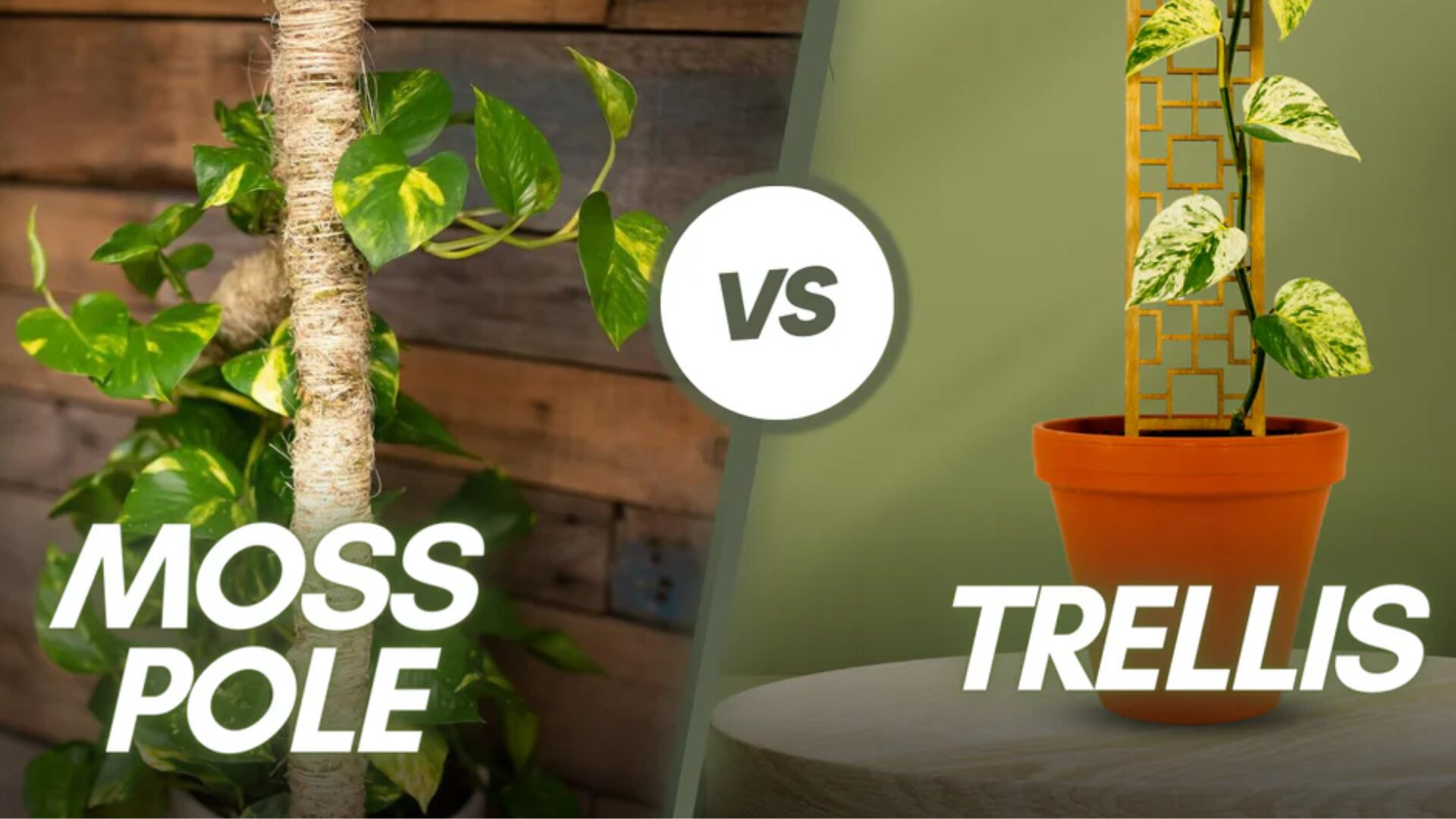Essential Houseplant Supplies: A Complete Guide to Tools, Pots, and Products You’ll Actually Use
Discover the essential houseplant supplies you truly need from clear pots and substrates to grow lights, plus where to shop at garden centres in Vancouver, BC.
If you’ve ever stood in the middle of a garden centre wondering which houseplant supplies you actually need, you’re not alone. Shelves full of fancy gadgets, mysterious fertilizers, and ten different types of soil can make anyone feel overwhelmed. The truth is: you only need a solid core kit of plant supplies to grow a healthy indoor jungle – everything else is optional “nice-to-have”.
In this guide, we’ll walk through the main indoor plant supplies that truly make a difference: pots, substrates, supports, watering tools, fertilizers, pest control, grow lights, and even greenhouse cabinets. Whether you’re shopping online or at a garden centre Vancouver BC, this checklist will help you choose wisely and avoid wasting money on things you’ll never use.

1. Pots and Containers, The Foundation of Your Houseplant Setup
a. Why Clear Pots Are a Game-Changer
One of the most underrated houseplant supplies is a simple clear plastic pot. Clear pots let you:
-
Check how root-bound your plant is
-
Monitor root health (firm, white roots vs. brown, mushy roots)
-
Spot early signs of root pests or rot
Many indoor growers pot directly into a clear pot for houseplants and then tuck it inside a decorative cover pot. This way, you get the best of both worlds: plant health visibility and pretty décor.
A cover pot also blocks light from the sides, which helps prevent algae build-up. Algae is usually harmless, but once it coats the inner wall of a clear pot, you can no longer see the roots, defeating the whole purpose.

b. Self-Watering Pots for Busy Plant Parents
If you travel often or tend to underwater, self-watering pots can be a lifesaver. These pots usually have:
-
An inner pot for your plant and substrate
-
An outer reservoir that stores water
-
A wick or bottom holes that allow the mix to pull up moisture as needed
They’re especially useful for semi-hydro setups (like LECA or pon) or thirsty plants that hate drying out completely. Look for designs with:
-
A removable inner liner (so you can flush the substrate)
-
A water gauge so you can see when it’s time to refill
You’ll find a variety of self-watering designs at plant stores, larger garden stores, and many plant nurseries Vancouver wide. When in doubt, start with one or two pots, test them on a non-fussy plant, and see how they fit your routine.
2. Substrates and Potting Mixes: What Your Plants Grow In
a. A Simple DIY Potting Mix That Actually Works
You don’t need a laboratory to mix soil. A basic, effective DIY potting mix for houseplants can look like this:
-
High-quality base mix (e.g., a peat or coco-based mix with perlite)
-
Added orchid bark for chunkiness and airflow
This kind of chunky mix works well for most aroids, vining plants, and many Hoya. If you want more drainage, add extra perlite or pumice. If you want more moisture retention for ferns or begonias, reduce the bark and add a bit of vermiculite.
b. Specialty Mixes for Different Plant Types
If you’d rather not DIY, many garden centres in Vancouver and other cities stock ready-made blends such as:
-
Aroid mix for Monsteras, Philodendrons, and climbers
-
Cactus & succulent mix with extra drainage
-
Orchid mix with bark and coarse particles
These mixes are particularly useful if you have a large collection and want to streamline your houseplant supplies. Look for them at your local plant shop Vancouver or trusted online plant store Vancouver retailers.

c. Semi-Hydro, Pon, and Sphagnum
More and more indoor growers are experimenting with:
-
Semi-hydro substrates (like LECA or pon-style mixes of lava rock, pumice, and zeolite)
-
Sphagnum moss for rooting cuttings and moisture-loving plants
Semi-hydro systems pair well with self-watering pots, while high-quality sphagnum is ideal for propagation boxes, moss poles, or moisture-demanding species. Avoid the cheapest moss you can find; low-quality moss often smells bad and breaks down quickly.
3. Supports: Trellises, Stakes, and Moss Poles
a. Clear Trellises and Stakes
As your plants grow, they’ll often need support – especially Hoya, climbing Philodendrons, and tall Anthuriums. Clear acrylic trellises and stakes are popular because:
-
They’re sturdy and don’t rot in damp substrates
-
They blend visually into the background
-
They work in both soil and semi-hydro
You can shape vining plants around a U-shaped trellis or use straight stakes with clips to hold up tall stems and heavy leaves. These supports are now standard items in many indoor plant supplies aisles at big garden stores.
b. Moss Poles for Big, Dramatic Leaves
If you want large, mature leaves on climbers like Monstera and Epipremnum, a moss pole is almost essential. A good moss pole should:
-
Have a sturdy back or spine
-
Hold a good volume of moist moss inside
-
Be easy to extend as your plant grows
-
Allow you to open it if you need to repot or propagate
Some growers keep their moss poles moist using plastic cups or drip toppers on top of the pole. You fill the cup, and water slowly seeps down through small holes into the moss. It sounds fussy, but the payoff in leaf size is often worth the extra effort.

4. Watering Tools, Make Watering Easier, Not Harder
Electric Sprayers and Misters
Watering a whole indoor jungle with a tiny trigger bottle is a fast track to wrist pain. Upgrading to an electric sprayer is one of the smartest houseplant supplies investments many collectors make. Benefits include:
-
Consistent water flow without hand pumping
-
Adjustable pressure for gentle or stronger flow
-
Large capacity (some hold up to 8 L / 2 gallons)
Use a larger electric sprayer for watering and a smaller electric mister for pest treatments or foliar sprays. These tools turn a 2-hour watering session into something far more efficient – and much kinder on your hands.
5. Fertilizers: Feeding Your Indoor Jungle
a. Core Fertilizer Routine
Most houseplants benefit from regular feeding during the growing season. A good fertilizer routine might include:
-
A complete liquid fertilizer (balanced N–P–K plus micronutrients)
-
Added calcium-magnesium (Cal-Mag) for semi-hydro setups
-
Occasional kelp-based products for gentle growth stimulation
You can mix your fertilizer into a large sprayer and label the pump bottles with the number of pumps needed per litre or gallon. This keeps your houseplant supplies organized and reduces mistakes.
b. Budget-Friendly Options That Still Work
You don’t need exotic products to see results. A simple, balanced all-purpose fertilizer (like a 20-20-20) from a garden centre Vancouver BC or local plant nurseries Vancouver can give excellent growth and even more blooms on Hoya, succulents, and flowering houseplants.
For cactus and succulents, a dedicated low-nitrogen fertilizer or a specialized cactus formula is ideal. Again, these are easy to find at local garden centres in Vancouver and many plant stores.
6. Pest Control: Staying Ahead of the Bugs
No list of houseplant supplies is complete without pest control. Sooner or later, fungus gnats, spider mites, mealybugs, or thrips will find you. A basic pest kit might include:
-
A DIY spray with isopropyl alcohol, mild soap, and water
-
A ready-to-use miticide or insecticidal spray suitable for indoor plants
-
Mosquito dunks or bits (for controlling fungus gnat larvae in the soil)
-
Beneficial insects such as green lacewing larvae or predatory mites
The best “product” is consistency. Most treatments need to be repeated every few days or weeks, depending on the life cycle of the pest. Choose a routine you can realistically stick to – even the strongest spray won’t help if it’s used only once.
7. Grow Lights and Greenhouse Cabinets: Extending Your Growing Space
a. Choosing Grow Lights for Houseplants
If your home doesn’t get enough natural light, grow lights for houseplants are no longer optional – they’re a core part of your indoor plant supplies. Look for lights that:
-
Are full-spectrum or close to natural daylight
-
Provide enough intensity for the distance to your plants
-
Match your aesthetic (pendant, bar, or clip-on style)
Warm-toned lights create a cozy atmosphere in darker corners, while neutral or daylight tones blend well with window light. Many garden stores and plant shops now carry stylish grow light options that don’t look like industrial warehouse fixtures.
b. Greenhouse Cabinets and Shelving
Greenhouse-style cabinets – like glass-door metal units with added lights, fans, and higher humidity – are popular with serious collectors. A typical setup combines:
-
An IKEA-style cabinet (e.g., Millsbo or similar)
-
Waterproof LED grow lights
-
Small fans for air circulation
-
Optional humidifier or water trays
These cabinets are perfect for starter plants, rare aroids, or Hoya collections. Once you add a cabinet and a few lights, the rest of your houseplant supplies suddenly work harder for you: plants grow faster, root quicker, and recover from pests more easily.
You can also create open plant shelves using metal racks or wood shelving and mount grow lights above each level. This is a practical way to maximize space in apartments and condos.
8. Where to Buy Houseplant Supplies Locally
If you’re in or near Vancouver, you have plenty of options to build your houseplant supplies kit:
-
Visit a garden centre Vancouver BC for soils, fertilizers, pots, and basic tools
-
Explore different garden centres to compare potting mixes and grow lights
-
Check out your favourite plant shop Vancouver for specialty substrates, moss poles, and stylish pots
-
Look for plant store Vancouver or plant nurseries Vancouver online to see who carries semi-hydro products, clear pots, and rare houseplants
-
Don’t forget general garden stores and even dollar stores for simple cover pots and accessories
Mixing local shops with a few trusted online suppliers usually gives you the best balance of price, quality, and variety.
9. FAQ: Houseplant Supplies
Q1: What houseplant supplies should a beginner buy first?
Start with the basics: a few good clear pots and cover pots, a well-draining potting mix, a simple all-purpose fertilizer, and a watering can or sprayer. As your collection grows, you can add supports (trellises or moss poles), pest control products, and grow lights.
Q2: Are self-watering pots good for all houseplants?
Not all. Self-watering pots work best for plants that like consistent moisture (many aroids and semi-hydro setups). Cacti and some succulents can rot if kept too wet, so they usually do better in traditional pots with drainage and a very gritty mix.
Q3: Do I really need grow lights for houseplants?
If your plants get bright, indirect natural light for most of the day, you may not need grow lights. But in darker homes or during long winters, grow lights are one of the most effective houseplant supplies you can add to keep growth strong and prevent leggy, weak stems.
Q4: How often should I fertilize my houseplants?
In general, feed lightly every 2 – 4 weeks during the growing season (spring and summer) and reduce or pause feeding in winter when growth slows. Always follow the label instructions on your fertilizer and err on the side of “less but more often” rather than heavy, infrequent doses.
Q5: What is the best way to control fungus gnats?
Combine multiple tactics: let the top layer of soil dry more between waterings, use mosquito dunks or bits in your watering can to target larvae, and add yellow sticky traps to catch adults. Over time, these simple plant supplies can dramatically reduce fungus gnat populations.

Whether you’re shopping for plant lovers, hunting for meaningful plants, or simply looking to add a touch of green to your own holiday décor, DH Garden Centre has everything you need for a joyful, vibrant, and beautifully green Christmas.
Visit DH Garden Centre today – where the holidays grow brighter, one plant at a time.


